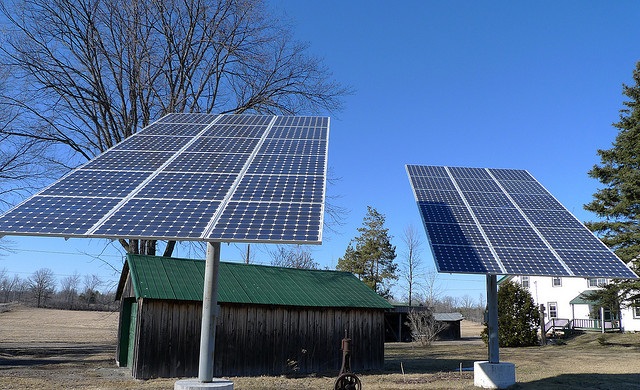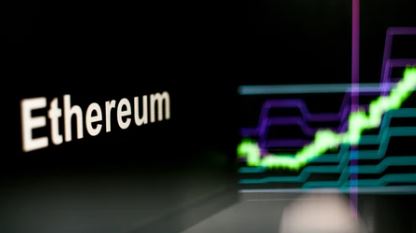SMA Solar was/is the doyen of the Inverter market, but noisy little upstarts from the East, heightened tariff degressions in its main markets of Italy & Germany, and the potential for a disruptive technological shift in rooftop installations through microinverters (where market share is lacking), have led to the Company announcing that their outlook for 2013 ain’t that great. The Company announced a few weeks ago that they expect 2013 sales to be in the region of EUR 0.9-1.3bn and could not rule out the possibility of a loss. The stock fell 35%.

What is an Inverter
An Inverter is the integral part of a solar system that converts DC electricity to AC. Other uses for inverters include trains and ships. They come in a variety of sizes depending on the application, with strings of panels connected in parallel according to the most apt powered inverter i.e. a string of six 230W panels would go into one 1380W inverter.
Inverters also have efficiencies, which are dependent on their power rating and the power they are transforming. So the further away from an inverters designed power, the less efficient the conversion becomes. Most sit at around the 96% plus mark – with SMA in the top spot at 98.5%.
Increasing Competition
An inverter is made of a bunch of components from microprocessors to the usual electrical widgets, alongside software that is integral to tracking the optimum voltage to apply across the panel system in order to scrape as much juice as possible from the array (a balancing act between the doping of the cells and the number of electrons being produced by the sunlight). It is complex and a lot of IP has been generated to get to where we are now – but ultimately it is just a box that is pretty easy to replicate.
SMA’s recent presentation shows that their 2011 market share was 35% excluding China and 29% including it. Roll on the Chinese & Taiwanese – although they haven’t yet made significant inroads into western markets due to unreliability issues and lower efficiency levels. From these figures it looks like Western competitors can’t make inroads into Asian markets either.
Even so a slew of Western manufacturers have come out of the woodwork which have been gradually eroding SMA’s market share in the more mature solar markets – in 2010 (an anomalous year due to the shortage of microprocessors in the first half on an unexpected demand upswing) market share was north of 40%, which has now shrunk to 35% in 2011. Companies such as Powerone, Fronius, Satcon and Siemens have all been increasing the level of industry competition and eroding margins across the board – so much so that Satcon filed for bankruptcy (they had a 26% market share of the US commercial market in 1H 2012), maybe a sign of things to come for this particular segment of the value chain.
Disruptive tech – Micro inverters and Power Optimisers
A microinverter deals with the problems that the larger single inverters missed out on – and it has to do with a concept called Maximum Power Point Tracking – or essentially where the inverter adjusts the applied voltage to the current and optimises the power (remembering your physics Power = I x V) . The difference between a power optimiser and a microinverter is that the MPPT tracking and AC conversion is split by the power optimiser – leading to an overall DC to AC conversion for the entire array.
When you had six panels connected in an array you the inverter adjusted the voltage to the lowest current – so if one panel was producing less (i.e. by being shaded or being mismatched) the whole system would be optimised by the inverter to the lowest level and so you’d get less bang for your buck. Microinverters change all that by allowing each panel to be optimised individually, alongside a host of benefits such as lower installation times and costs, longer lifetimes (100 years plus compared to a normal inverter at 10-15), and easy array expansion as the system is connected in parallel rather than series. The only negatives are a slight increase in cost which is usually more than offset by the benefits (you won’t have to replace your inverter every 10-15 years), and the lower efficiency at 91-95% – compared to traditional inverters at the 96%+ mark (again the argument is that the increased MPPT outweighs the negatives).
Market Demand
SMA highlighted the point that the expected growth in markets outside of the EU will not be sufficient to compensate for the expected slackening demand.
Germany’s new tariff degressions of up to 29%, to be fully axed when cumulative installed capacity reaches 52GW and with the >10MW segment being completely halted, have sent shockwaves throughout the industry. The goal was to try and push the annual run rate to within 3-4 GW (the run rate they have always been trying to achieve and overshooting as prices have crashed again and again stimulating demand), but yet again the first six months tally came to a 4.4GW suggesting another record breaking year is on the cards. At present the 30GW cumulative installed capacity mark has been breached.
Italy’s tariffs have also been dramatically lowered in the Conto Energia V, when the EUR 6bn target had been reached in July. Problems with budgets mean that going forward the market will most likely be in the region of 2-3GW per year rather than the previous year’s 6-9GW.
With the ROW not expected to fully pick up the pieces and China only to consume domestic production – there is an expectation of oversupply continuing all along the value chain for the foreseeable future – and of course the ever more bellicose rumblings and fall out of the trade war on modules and polysilicon adds to the problem. This can only mean one thing – the repetitive cycle of lower prices below cost, increased competition, bankruptcies, refinancings and all the other horrors that come with the perfect storm – with the next tumbles expected from the Eastern Giants.
Furthermore, the uncertainty as the industry moves from an incentive FIT based model to a PPA model means the industry is on the cusp of a new era – the question is will it sink or swim in this new environment with lack of Government support? It will be cheap and have reached grid parity, but the externalities of switching baseload power on and off when the sun shines, the relatively nascent level of the industry, and further grid costs to cope with the distributed generation model, leaves the future open to both positive and negative interpretation.
Conclusion
SMA is a good Company, it has a leading, credible brand with top rated efficiencies. They aren’t going to go the same way as Q-Cells or Centrotherm for the time being – but they have missed a trick by being late to market with the Microinverter.
You can’t help but feel the macro conditions are against them – more competition and less market share, less expected demand (although it wouldn’t be surprising if 2012 was another stellar year in terms of global installations as module prices are dropped to meet tariff cuts) – so the conclusion has to be stay clear for the time being – short it if you’re brave – and keep an eye on the government led demand conditions for a potential recovery in 2014 (ish – but that’s a pie in the sky guess).


 Hot Features
Hot Features












